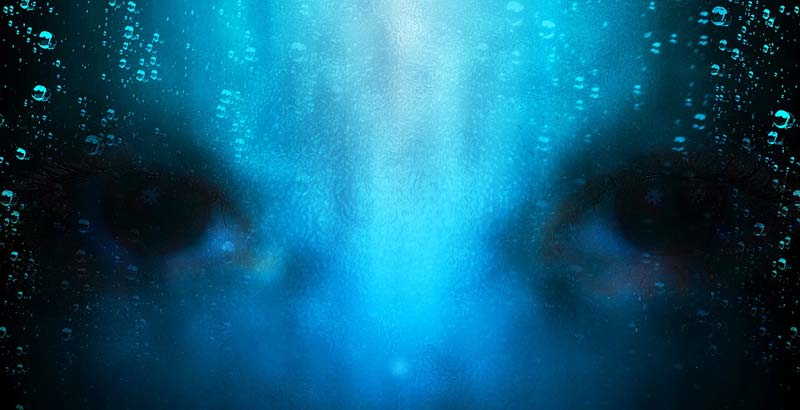
Ours is an odd world in which to be yourself --- or any self at all.
On the one hand, contemporary U.S. society centers the self in all things: We pursue our self-interest, we see to our self-care. For all the focus on self-hood, we aren't particularly self-reflective.
The nature and essence of being an individual - what we're really like, whether we're naturally good or evil or suspended somewhere in between - go largely unexamined.
But the questions themselves are too fundamental to be ignored. Thus they emerge in strange and unexpected places: the serial killer portrait genre, for example.
The latest and most buzzy addition to the bracket is a Netflix documentary titled "Conversations with a Killer: the Ted Bundy Tapes."
As with much of the genre, "Conversations with a Killer" aims in part to highlight in chilling detail how ordinary monsters like Bundy can be. Bundy was a murderer who revelled in the humiliation and sexual torture of his victims, but he was also clean-cut, well-spoken and reasonably intelligent; he chased frogs as a child and loved to ski, he charmed reporters and had no shortage of friends who had fond memories of him.
Would you have suspected that this man was responsible for the bloody killings on the nightly news in the late 1970s? Or would you have been as shocked as anyone by the mundane face of a beast, startled by the banality of evil?
One of the implications in the notion that evil is commonplace is that we all share some capacity for it. Most of us will never do anything particularly evil, but perhaps we'll always be more capable of it than we imagine. The serial killer genre suggests that we are all able, if "under different circumstances," as one thorough essay on Bundy put it, to "go down the same path they did."
Yet, when the fact of commonplace evil manifests outside of cases such as Bundy's - which is so horrific as to become almost abstract - it suddenly becomes harder to associate oneself with it.
Recently, Irish actor Liam Neeson revealed in a film-promotion interview that he had once contemplated committing a racially motivated murder. Upon learning that a friend of his had, she said, been raped by a black man, Neeson spent about a week and a half prowling the streets with a bludgeon, hoping for an opportunity to murder a black man.
"It was horrible, horrible, when I think back, that I did that," Neeson told aghast journalists, "It's awful. But I did learn a lesson from it, when I eventually thought, 'What the f--- (am I) doing?' "
Neeson was immediately and roundly condemned, with the New York red carpet event planned for his upcoming film's premier canceled in the wake of his confession. He's since been on an awkward sort of apology tour, appearing on "Good Morning America" to make the case that what he contemplated years ago doesn't represent who he is now.
But aside from a few defenders (including Whoopi Goldberg and Michelle Rodriguez), Neeson's admission has been met with a great deal of shock and outrage - more than you might expect from a society that knows racism is widespread and that suspects evil itself may be even more common.
It has to be the case that many more people than Neeson are capable of doing exactly what he described. (That may, in part, account for the swift and sudden condemnation of his words and thoughts.)
Surely, more people are capable of contemplating the evil that Neeson did than enacting the evil that Bundy did. Maybe that's what makes it easier to acknowledge Bundy's evil as a possibility for more of us than we might initially presume: What Bundy did was bizarre, extreme and remote; what Neeson did is disturbingly familiar. There's little risk in musing about evil that bears the scope of Bundy's and our potential relationship to it; but Neeson's example is more immediate, more realistic.
Saying there's evil in all of us is one thing; believing it - really feeling it, and the seasick ache it inspires - is another. We consider evil often enough in extremis, but hesitate to accept the seed of it in ourselves. We don't have any idea how evil we really are; considering it is too hard.
There have been decades of debate, now, about what Hannah Arendt really meant when she coined the phrase "the banality of evil." Separate from whatever she thought, I do think evil is common - and that common things can be horrifying, that there really are monsters, so to speak, under plenty of beds.
Another theory on Arendt advanced by the scholar Shmuel Lederman seems to bring her point into sharper focus: Lederman argues that Arendt meant to say that evil is thoughtless, that it engenders a refusal to reckon with the nature or consequences of one's actions.
Evil rejects reason and contemplation, and it is fundamentally unreflective. That certainly describes Bundy, and the Neeson of his own recollection. And it describes us, too.
Sign up for the daily JWR update. It's free. Just click here.
(COMMENT, BELOW)
Previously:
• 12/04/18: Should humans tinker with human blueprints?
• 05/04/18: America is obsessed with the virtue of work. What about the virtue of rest?
• 02/12/18: The GOP plan to penalize having children
• 12/27/17: No, the Vanity Fair staffers behind the Hillary video shouldn't be fired


 Contact The Editor
Contact The Editor
 Articles By This Author
Articles By This Author